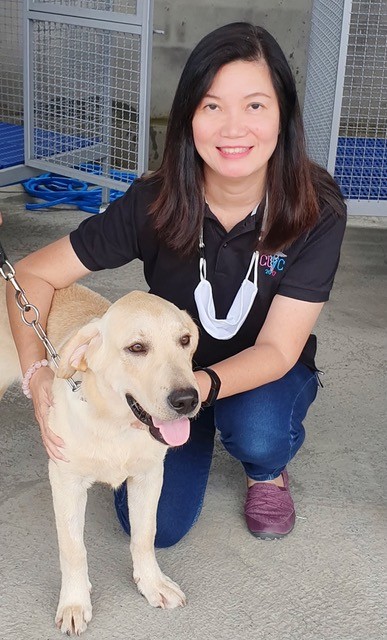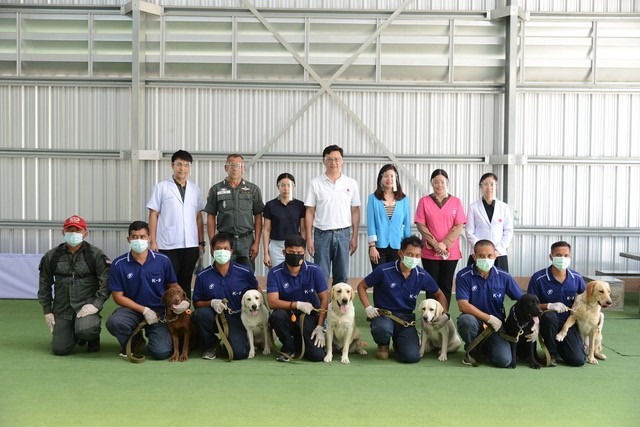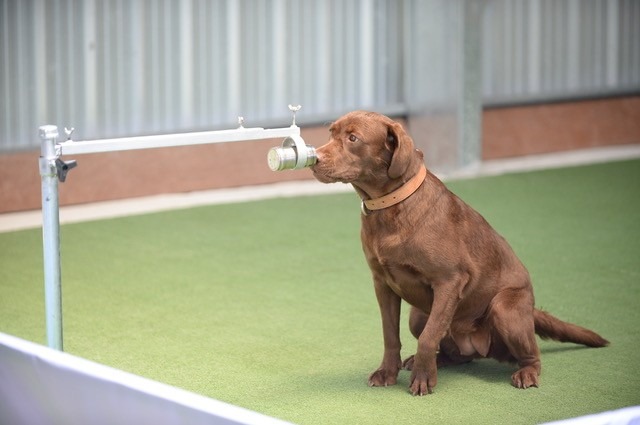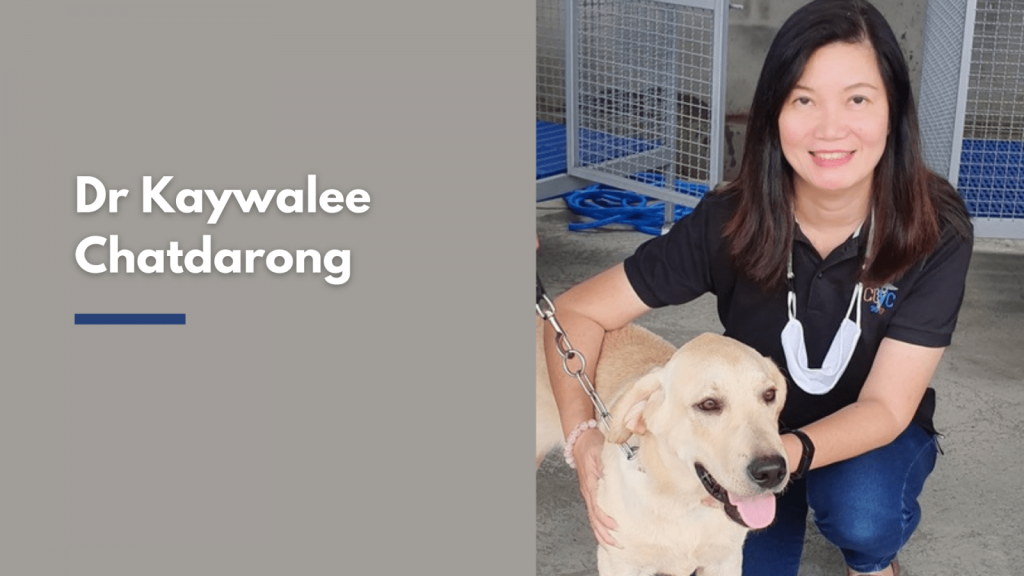Dr Kaywalee Chatdarong is a past president of the Veterinary Practitioner Association of Thailand and a member of the WSAVA’s new Reproduction Committee
Find out about her work, including her pioneering project to train dogs as ‘COVID-19 sniffer dogs’ in Thailand

Dr Kaywalee Chatdarong
Could you briefly summarize your career for our members?
I graduated from the Faculty of Veterinary Science, Chulalongkorn University, Thailand, in 1993 and later received a MSc and PhD from the Swedish University of Agricultural Science in 2003. I am now Professor of Theriogenology and Vice Dean for Research and Innovation at Chulalongkorn University. I lecture DVM students, as well as advising PhD and MSc students and residents on their theses on subjects involving reproduction and contraception in companion animals and wildlife.
You are a past president of VPAT? What do you believe is the value to veterinarians of active involvement in veterinary associations – whether national, regional or global?
It was an honor and privilege to be president of the Veterinary Practitioner Association of Thailand (VPAT). As a representative of Thai veterinarians, I had the opportunity to work with the WSAVA and, in particular, to host WSAVA World Congress in 2013, an important event, which was very beneficial to veterinarians in our region. VPAT has also set standards for animal welfare for our members and developed guidelines for animal hospitals in Thailand.
horizontal
Qualifying as a DVM is the first step into the veterinary world. It is when the real learning can begin. Involvement with associations provides us with the opportunity to exchange knowledge, new ideas and experiences and to make new connections and friends.
The world is moving quickly and technology is constantly advancing with country borders irrelevant. It is important that gold standard veterinary practices are developed at a global level and this is another reason why involvement in veterinary associations is so essential because they lead work in this area.
What took you into this particular area of veterinary medicine? Did you always have a strong interest in research?
I am proud to be a veterinarian, the only profession that brings together the health of animals, the well-being of people and a healthy environment.
As a researcher, I enjoy searching the literature in order to improve my veterinary practice. Research is the discovery of new knowledge. Research provides the opportunity to deal with people across disciplines. I enjoy carrying out research, whether the results are positive or negative. ‘Go’ or ‘no go’ – there is always an answer!

full
How did you come up with the idea of using dogs to detect COVID in sweat and how is the project going?
The noses of dogs have special anatomical characteristics, giving them an extraordinary capability to distinguish substances. In the case of COVID-19, it became clear that dogs could detect the pattern of volatile organic compounds (VOCs) from patients’ secretion, eg sweat or saliva so we embarked on this project, funded by Chevron Thailand Exploration and Production, Ltd. We selected sweat as the VOC source for our project as it is easily obtained in the warm country like Thailand.
4310
full
The dogs in our trial are currently working to scent sweat obtained from Chevron’s staff, who are offshore four days a week. They are also practicing sniffing out more positive and negative sweat samples collected from RT-PCR confirmed patients. Next, we will install our talented friends to help screen travellers, perhaps at airports. They won’t sniff people directly but we will take collected sweat samples to them in the same way that we are conducing our research project. At 95% accuracy and offering a non-invasive method of sample collection and real time results, we are certain that the dogs could prove a more effective screening tool than temperature check points.
I would like to thank earlier researchers who have shared their methods and results through their articles (Grandjean et al. 2000, Jendrny et al. 2000) and many others.
Dogs already help humans in so many ways – hearing dogs, guide dogs, assistance dogs etc. Is there more canine potential still to be unleashed do you think?
Recent research has shown that dogs can identify epileptic seizures by odor changes in urine and sweat (Catala et al. 2019) and alert to impending migraines by changes in behavior (Marcus 2012). How fantastic they are! I think it is likely that they can also be trained to detect anxiety and even clinical depression, as these are neurological disorders involving imbalances of chemical components. Dogs could alert people prior to the onset of symptoms and this could even help us to reduce suicide rates among sufferers.

full
What are your hopes for the future of your project and what comes next?
We are awaiting an invitation to extend our project to airports or public places when the country is open to travelers. While vaccination is underway, there will still be people who don’t receive a vaccination. Our work could help governments to consider reducing the duration of quarantine for travelers.
icon-video
Watch this short video to find out more
: https://1drv.ms/v/s!AsFKjXEtwAQAm3eqEWy4MyzXq-4d

